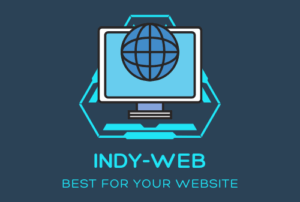In today’s digital era, most of our online activities are shaped by large platforms such as social media networks, search engines, and centralized applications. While these platforms make it easy to connect, they also raise concerns about data ownership, privacy, and digital independence. This is where Indy-Web steps in. Known as the “Independent Web,” Indy-Web represents a forward-thinking movement that envisions an internet where individuals, not corporations, are in control.
What is Indy-Web?
Indy-Web is a concept built around creating a user-centered internet. Unlike traditional platforms that store and control user data on their own servers, Indy-Web promotes a decentralized model where individuals manage their own digital identities and content. Instead of logging into multiple apps and websites that track your behavior, Indy-Web allows you to interact online while keeping your data private and portable.
At its core, Indy-Web empowers people to own their digital presence. This means your photos, blog posts, messages, and personal information aren’t scattered across different platforms but stored in a secure space that you manage. You decide who has access, how it is shared, and when it is deleted.
Why Indy-Web Matters
The rise of Indy-Web is fueled by the growing concerns around digital privacy and corporate control of information. In traditional systems, platforms profit from user data by collecting, analyzing, and selling it to advertisers. This not only raises ethical questions but also limits users’ freedom.
Indy-Web flips this model by ensuring individuals retain ownership. Imagine being able to share your vacation photos directly with friends without uploading them to a social media platform that uses them for advertising. Or collaborating on a project with colleagues without relying on a centralized app that collects every keystroke. Indy-Web makes this possible.
Another important aspect is digital security. Centralized systems often face large-scale data breaches because all information is stored in one place. A decentralized, user-first web greatly reduces the risk, since there is no single point of failure.
The Technology Behind Indy-Web
Indy-Web is built on concepts of decentralization, open-source development, and personal data sovereignty. While the specific technologies can vary, they often include:
- Decentralized identifiers (DIDs): Unique digital IDs owned by individuals, not companies.
- Personal data stores (PDS): Secure storage managed by the user where their data lives.
- Interoperability protocols: Standards that allow different applications to communicate without requiring centralized control.
- Blockchain and cryptography: Tools to ensure data integrity, security, and privacy.
Together, these technologies make it possible for Indy-Web to function as a truly independent digital ecosystem.
Real-World Uses of Indy-Web
The potential of Indy-Web is vast. Some real-world applications include:
- Education – Students can manage their learning records and credentials digitally, carrying them from one institution to another without relying on third-party systems.
- Healthcare – Patients can store their medical history privately and share it only with doctors or hospitals when needed.
- Business collaboration – Teams can communicate and share documents securely without handing over data to cloud giants.
- Social interaction – Friends and families can connect through decentralized platforms where no company monitors conversations.
Benefits for Individuals
For the average person, the main benefits of Indy-Web include:
- Full ownership of personal data.
- Enhanced privacy and security.
- Freedom from platform lock-ins.
- Ability to choose which apps and services to use without losing control of data.
This creates a more ethical, transparent, and user-respecting internet experience.
Challenges Ahead
Despite its promise, Indy-Web also faces challenges. The most significant one is mainstream adoption. People are used to convenience; platforms like Facebook, Google, and Instagram make things simple, even if they compromise privacy. Convincing users to shift to Indy-Web requires strong education, user-friendly tools, and visible benefits.
Another challenge is infrastructure development. While the concept is powerful, creating a decentralized system that works as seamlessly as centralized platforms takes time and resources. Developers and organizations working on Indy-Web need to focus on building easy-to-use applications that encourage adoption.
The Future of Indy-Web
The idea of Indy-Web is still evolving, but its importance is growing every year. As more people demand transparency and control in their digital lives, Indy-Web stands out as a promising solution. It aligns with the vision of an open, democratic internet where people—not corporations—are at the center.
We may still be in the early stages, but as technology matures, Indy-Web could redefine how we interact online. Just as email and the World Wide Web changed communication forever, Indy-Web has the potential to transform digital life into something more secure, ethical, and empowering.
Conclusion
Indy-Web is more than a technical innovation; it’s a philosophy of digital independence. By giving individuals control over their own data, it challenges the existing norms of centralized platforms and offers a refreshing vision for the future of the internet.
As awareness grows, Indy-Web may inspire a new era of connectivity where ownership, privacy, and freedom take center stage. It’s not just about technology—it’s about reshaping the digital world for the benefit of everyone.





